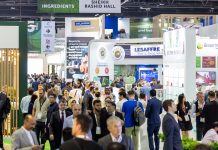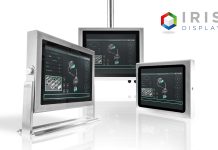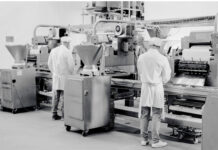
When Zerbinati’s garden products reach consumers’ tables, their basic organoleptic properties are left intact. Preserved thanks to the engineering solutions developed by Tecnica5.
For over 30 years Tecnica5 has been active in the food sector, offering consulting and design services for the construction of food-processing plants, with particular expertise in process automation. The specialization in the food industry derives from a strong and long lasting cooperation with primary Italian and foreign companies operating in the sectors of fresh & matured meats, coffee, vegetables, and baked goods. “A company at the top of the sector, with very simple working practices”, explains the owner, Andrea Losi, “and for this reason we hit home. Through advice, analysis, feasibility studies and design, we establish strong ties with our customers. After listening to the single needs, we can offer design solutions, before and after sales assistance, that take into account the manufacturing needs with the economic circumstances of an investment”. The core business of Tecnica5 is factory automation, where next to made-to-measure equipment and machines, the company can advise also on the use of the best control systems. The last project was born out of the encounter with Zerbinati, a company specialising in the distribution of fresh fruits and vegetables in bags and trays. Active since 1970, Zerbinati is a family-owned company, specialising in the production and distribution of fourth range products and ready-to-eat soups. To meet growing production and market needs, and to comply with new food and hygiene regulations, (Haccp system), Zerbinati turned to Tecnica5 for its new plant. After an accurate study of production data, Tecnica5 envisaged a project that could encourage Zerbinati’s growth. The analysis of present and future data, and the real design itself, took several months, during which professionals from both sides developed the production and functional layout of the new plant. At the end of the production layout design, Tecnica5 processed all the specifications of the basic plant as well the special production-related equipment. This design phase generated the metric calculations and specifications Zerbinati needed to set up a tender among the most important Italian manufacturers of basic and specific processing systems and equipment.

Case history: Zerbinati
With the implemented method, Zerbinati has been able to estimate the real cost of the works, and select reliable partners adapted to the different plant engineering needs of the new facility near Alessandria. The new facility, in fact, is located in the industrial area of Casale Monferrato, close to the existing one for the production of ready to eat soups, With a total surface area of 24,000 square meters, 11,000 meters of which are covered, the plant is divided in three areas: production, technology, office and services. Tecnica5 made many significant interventions for the success of this leading food company of the made in Italy, starting from energy optimisation of the central refrigerating unit and the production of icy water. The walls and ceilings of cold storage rooms and production areas have been insulated with PIR panels that offer high insulating power. Excellent work has been done to insulate the floor in order to minimise the dispersion of cold to the ground in the refrigerated rooms. The technical room located above the production area, where all essential systems are gathered, allows operators to perform all maintenance interventions without polluting the production areas. The waste water filtration system for sorting processing wastes has been designed in order to recycle most of the waste water for conveying processing wastes back to the filtration system. The significant interventions implemented by Tecnica5 include: total recovery of the defrosting water of the refrigeration system; low energy lighting system; photovoltaic plant also for sanitary hot water supply on the roof of the building.



